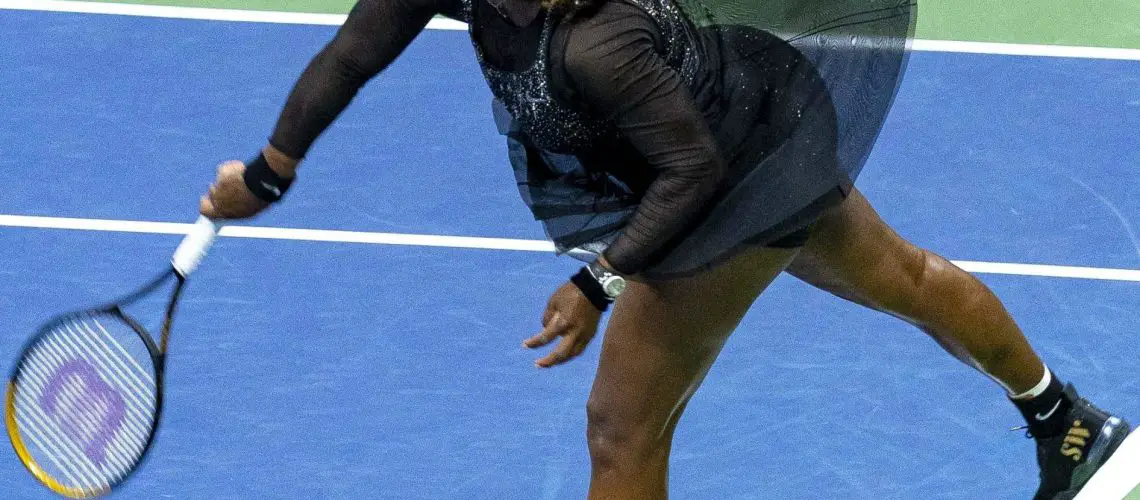We may earn money or products from the companies mentioned in this post.
Introduction

Tennis, the elegant and competitive sport loved by millions around the world But have you ever stopped to ponder the peculiar scoring system that sets it apart from other sports? In this blog post, we’ll delve into the fascinating history behind tennis scoring and demystify its unique intricacies From its origins in Medieval France to the influence of Real Tennis, we’ll explore how this system came to be So grab your racket and let’s dive into the captivating world of tennis scoring!
A Brief History of Tennis Scoring System
The roots of tennis scoring can be traced back centuries ago to Medieval France Back then, a game called “Jeu de Paume” (game of palm) was played, which served as an early precursor to modern tennis However, it wasn’t until later that the distinctive scoring system we know today began to take shape
One significant influence on modern tennis scoring is Real Tennis, a predecessor to lawn tennis that originated in the 16th century Real Tennis had its own unique scoring system based on a clock face divided into four quarters Each quarter represented different scores: 15, 30, 40, and game The terms “deuce” and “advantage” also emerged during this time
Purpose of Understanding Tennis Scoring
Now that we’ve uncovered some historical context behind tennis scoring, you might wonder why it’s essential to understand this seemingly complex system Well, understanding how tennis scoring works adds depth to your appreciation for the sport
By grasping the intricacies of each point won or lost, you can follow matches more closely and analyze players’ strategies better Moreover, comprehending the unique terminology used in tennis will allow you to engage in conversations with fellow fans more confidently
So whether you’re a casual observer or an aspiring player looking to improve your game, unraveling the mysteries of tennis scoring will undoubtedly enhance your overall enjoyment and understanding of this thrilling sport
In the next section, we’ll break down the fundamental elements of tennis scoring, including sets, games, and points Stay tuned for an in-depth exploration of this captivating scoring system!
The Numbers Behind Tennis Scoring
Basic scoring terminology and structure
When it comes to tennis scoring, the numbers used can sometimes seem perplexing But fear not, as we dive into the world of tennis scoring, we’ll unravel the mystery behind those unusual numbers
-
Love, 15, 30, and 40 points explained:
Unlike other sports where points are counted in a linear fashion, tennis has its own unique way of tallying scores The term “love” is used to represent zero or no points As the game progresses, players earn points in increments of 15 up to a score of 40 -
The concept of “deuce” and “advantage”:
In tennis, when both players reach a score of 40-40 (also known as deuce), things get interesting To win the game from this point onwards, a player must win two consecutive points If one player wins a point after deuce, they gain an “advantage” However, if they lose the next point, it goes back to deuce
Why tennis uses such unusual numbers for scoring
Tennis scoring might seem arbitrary at first glance, but there are theories behind why these specific numbers were chosen
-
Hypothesis: Historical connection to clock faces or quarters of an hour increments:
One theory suggests that the numbers used in tennis scoring have ties to traditional clock faces or quarters of an hour increments This could explain why scores increase by multiples of fifteen -
Hypothesis: Influence from Jeu de Paume (Real Tennis) scores:
Another theory points towards the influence of Jeu de Paume, an early version of tennis played in France In this game, scores were counted using 15, 30, 45 (which was later changed to 40), and then “game” The transition from 45 to 40 could have been made to simplify scoring
While these theories provide some insight into the origin of tennis scoring numbers, the true origins may forever remain a mystery Nonetheless, understanding the unique scoring system adds another layer of intrigue to the game
The Role of Serves, Games, Sets, and Matches in Tennis Scoring

In the exciting world of tennis, scoring revolves around a combination of serves, games, sets, and matches Understanding how each element contributes to the overall score is essential for any avid tennis fan or player
Importance of Serves in Determining Points Scored
When it comes to determining points in tennis, serves play a crucial role Serving is the act of starting a point by hitting the ball into the opponent’s court It allows players to gain an advantage right from the beginning
Serves can make or break a player’s chances of winning a point A powerful serve that lands within the designated boundaries can result in an ace – an unreturnable shot that scores instantly On the other hand, a poorly executed serve may result in a double fault, giving the opponent an easy point
Games – How They Are Won
A game is won by accumulating points until one player reaches “40” The scoring system starts at “love” (zero) and progresses to 15, 30, and finally 40 If both players reach 40 simultaneously, it creates what is known as a deuce scenario
In deuce situations, players must win two consecutive points to secure the game The first player to achieve this wins the game However, if both players continue to tie at every point after deuce, they enter an advantage phase where they have to win one additional point to claim victory
Sets – Accumulating Games to Win Sets
Sets are made up of several games and are crucial for determining who ultimately wins a match To win a set outrightly, one player must accumulate six games with a lead of at least two over their opponent
However, in some cases, the scores may reach six-all within a set In such situations, a tiebreak is introduced A tiebreak is an extended game that follows different scoring rules, and the first player to reach seven points with at least a two-point lead wins the tiebreak and the set
Matches – How Many Sets Make Up a Match?
In professional tennis, matches are typically played as either best-of-three or best-of-five sets In best-of-three matches, the first player to win two sets emerges victorious On the other hand, in best-of-five matches (commonly seen in Grand Slam tournaments), players must win three out of five sets to secure victory
Matches can be grueling battles that showcase not only physical prowess but also mental resilience and strategy The accumulation of sets determines who comes out on top and claims the ultimate triumph
Conclusion
Summary of key points about tennis scoring system
The tennis scoring system is an intricate and unique method of keeping track of points in a match It consists of games, sets, and matches, with each level having its own set of rules In a game, players earn points starting from 0 and progress to 15, 30, and finally 40 If both players reach 40, it is referred to as deuce From deuce, a player must win two consecutive points to secure the game
In a set, players compete to win six games while maintaining at least a two-game lead over their opponent If the set reaches 6-6, a tiebreaker is played to determine the winner of the set The first player to reach seven points with at least a two-point lead wins the tiebreaker and the set
A match is typically best out of three or five sets To win the match, a player must win the majority of these sets This can vary depending on the tournament or competition rules
Implications for player strategy based on unique scoring system
The scoring system in tennis has significant implications for players’ strategies during matches As each point carries value and contributes to winning games, sets, and ultimately matches, players need to carefully consider their approach
One essential strategy is maintaining consistency throughout the match Since every point matters, minimizing unforced errors can be crucial in securing victories Players strive to keep their opponents under pressure by playing consistent shots and forcing them into making mistakes
Serving also plays a vital role in player strategy A strong serve can result in easy points or put pressure on opponents right from the start Players often aim for powerful serves that are difficult to return or utilize strategic placement to exploit their opponent’s weaknesses
Another aspect of player strategy is adapting to the scoring system’s nuances For example, during deuce, players need to focus on winning two consecutive points to secure the game This requires mental resilience and tactical decision-making to seize opportunities at critical moments
In tiebreakers, players must adopt a slightly different approach The first player to reach seven points with a two-point lead wins the tiebreaker This encourages players to play more aggressively and take calculated risks in order to gain an advantage and close out the set
Overall, understanding and utilizing the unique scoring system in tennis is essential for players looking to excel in this sport By grasping the intricacies of games, sets, and matches, players can develop effective strategies that maximize their chances of success
Useful Links

Tennis Scoring: Points, Sets & Games | Tennis Rules
ELI5: Why tennis scoring is the way it is. : r/explainlikeimfive
Tennis Scoring Simplified | Point System + How To Keep …
Tennis Scoring System Explained
The Tennis Scoring System
How Does Tennis Score Work? | Tennis Score Explained
How Does Tennis Scoring Work?
Tennis scoring explained
The History of the Tennis Scoring System
Why is Tennis Scored 15, 30 & 40? – YouTube
Game, Set, Match: Tennis Scores & How To Read Them
How to Keep Score for Tennis: 11 Steps (with Pictures)
Tennis scoring, explained: A guide to understanding the …
Why Is Tennis Scoring So Weird? – A Guide For All Beginners
This is why the scores in tennis are 15, 30 and 40… …
Why is the scoring at tennis so strange (15, 30, 40 deuce …
Why is tennis scored the way it is? The love, 15, 30 and 40 …
Why Is Tennis Scored 15 30 40? (With 3 Theorys)
Where Did Tennis Scoring Come From?
How to Keep Score in Tennis





